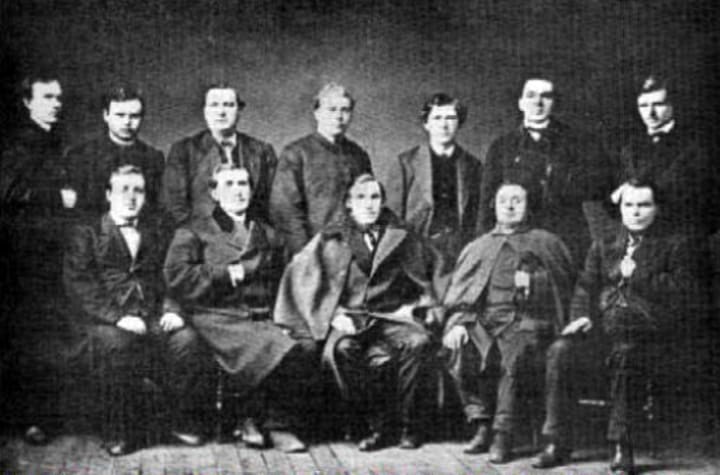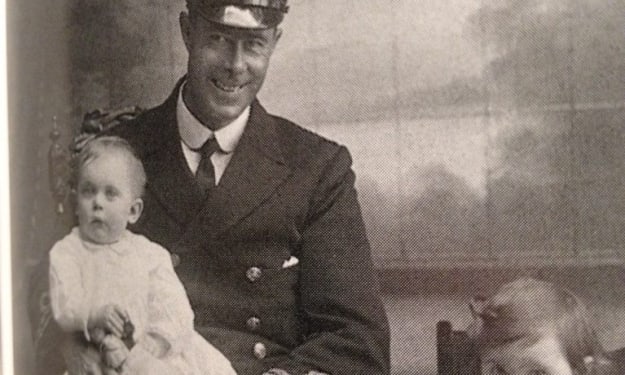When "Street Thugs" Were Irish
Cleveland, Ohio, was the richest city in the world in the Gilded Age. But in immigrant neighborhoods, wild gangs ruled the streets.

Anyone who pays attention to media headlines in 2022 knows that crime rates are up. As Americans emerged from COVID-19 lockdowns in 2020, another crisis ensued: a sudden uptick in the number of murders and other violent crimes, including carjackings and armed robberies. In 2021, Cleveland’s murder rate hit a 30-year high.
It might feel like we’re living in an unprecedented age. But this isn’t the first time the streets of Cleveland have been unsafe, for rich and poor residents alike. In the Gilded Age—roughly 1870 to 1910—Cleveland was the richest city in the world, with more wealth concentrated on Euclid Avenue than the most exclusive neighborhoods in Paris or St. Petersburg.
However, it was also a time of soaring wealth inequality and declining standards of living for the working class, which tend to go hand-in-hand with escalating crime.
Today, we envision street criminals as “inner-city youths,” mostly African-American. But in the Gilded Age, two-thirds of the people arrested for street crimes were Irish Catholic immigrants.
On July 15th, 1865, the Cleveland Daily Leader reported a gang fight on Cleveland’s west side. “A gang of Irish men and women, a score or more, fell-to on Canal Street last night and engaged in the high old sport of breaking each others’ heads, smashing noses, blacking eyes, chewing off ears, and giving tufts of hair to the evening breeze…A little boy, unused to such carnivals, ran up to the Police Station, in his fright, and summoned an officer to the scene.”

Father Nelson J. Callahan, a Catholic priest and Cleveland historian, wrote that violence was a fact of life in urban neighborhoods.
“It was estimated by police officials and trumpeted loudly in all Cleveland newspapers, especially Edwin Cowles’ anti-Irish Cleveland Leader, that 90% of all crimes committed within the city’s boundaries were perpetrations of the Irish,” Callahan wrote in his book Irish Americans and Their Communities in Cleveland. “Newspaper accounts of the day and the oral history of the Irish community handed down through the generations are in general agreement that most of the crimes would fit into the categories known today as robbery and assault. Groups of thugs would roam the bawdier areas of Irishtown and waylay the careless souls they would come upon.”
Apparently, the police did nothing about Irish-on-Irish violence. Unless they victimized a wealthier resident of the city, no arrests were made. City officials rarely got involved when poor immigrants fought amongst each other, seeing it as a waste of public resources. Therefore, the job of patrolling the streets and breaking up fights fell to Catholic priests. One priest who took an active role in fighting crime was Father James Molony of St. Malachi, himself an Irish immigrant and a refugee from the potato famine. At night, Molony often visited the fourteen saloons on Whiskey Island, imploring men to go home to their wives. He could often be seen leaning on a staff he’d brought from Ireland and ministering to warring gang members—including members of the notorious McCart and Triangle gangs, “whose members plied their nefarious ways in the darkness of night, mostly pilfering goods from the docks and nearby warehouses,” Callahan writes.

Molony and his fellow priests believed that two important deterrents to crime were education and opportunity. At the time, public schools were still permitted to teach Protestant doctrine to students, so Molony made it a priority to set up Catholic schools for both boys and girls. Catholic priests even played an active role in the community’s social life, steering Catholic youth away from drinking and petty crime and toward more positive activities. A major hub of social life for Irish Catholics was the LaSalle Club at St. Malachi. Here, the men abandoned street fighting for a sport they came to excel at: boxing. Some of Cleveland’s most famous Catholic immigrants, including Johnny Kilbane, were professional boxers.
My great-grandfather, whose Irish parents owned a saloon in the Flats, recalled how the neighborhood men decided to call a gang truce. Instead of victimizing each other, they channeled their energies into reenacting “The Battle of the Boyne” every Saturday night at the saloon.
“The priest played an exceedingly important role in the Irish community of Cleveland from the earliest days. In addition to their normal role as spiritual counselors, they were also deeply involved with the temporal welfare of their flocks. They were letter-writers, job-getters, domestic-peacemakers, [and] career motivators,” Callahan writes.
Callahan notes, with humor, that priests even took a “hands-on” approach to confronting the problem.
“They were, on more than one occasion, the subduers of the rowdy element,” he writes. “A consecrated hand can be formed into a fist as well as an unconsecrated one.”
About the Creator
Ashley Herzog
If you like my work, feel free to tip your writer.






Comments (1)
LOL! I love it! Priests taking on wise guys…😀. I’ve heard a saying that the Irish are supposedly the only race immune to psychotherapy. Of course it would take a priest to straighten things out.